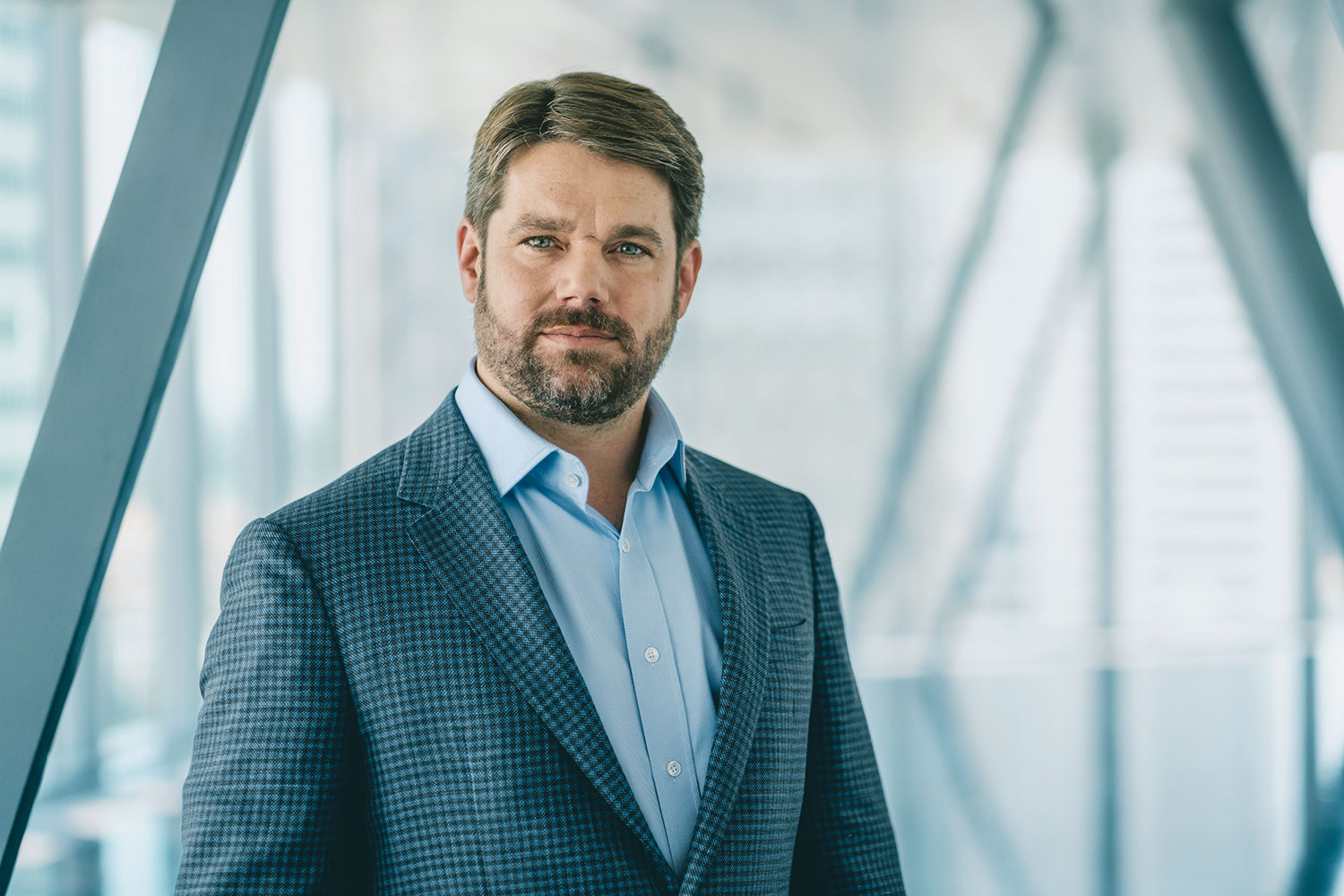Klemens Haselsteiner, CEO of STRABAG SE,
Fraunhofer magazine 2.2023

The construction industry accounts for about 38 percent of global CO2 emissions. As such, the entire industry is responsible for ensuring that value chains become more sustainable. That means it’s not only time for us to rethink construction, but to actually “redo” it.
What we build will last, often for years or decades. Some things will be here forever. This means we have to deliver, not only when it comes to infrastructure, but for housing too. After all, there is an urgent need for affordable, energy-efficient housing, especially in cities. Germany alone requires 400,000 new apartments per year. On one hand, we need to achieve this target; on the other, we must bring the energy transition to fruition – this means we have no choice but to renovate existing buildings at an increased rate. As it stands, only 500,000 apartments per year are modernized to make them more energy efficient. Given Germany’s overall stock of 42.5 million homes, this figure amounts to slightly above 1 percent. This is simply not enough.
Thinking about the future means confronting the present in no uncertain terms: We will only achieve our climate and housing construction targets if we make our planning and building process more sustainable (i.e., they conserve more resources and become more environmentally friendly) faster than we ever have before. And to do that, we need to think and act differently. No ifs, ands or buts. Just doing!
The “how” is key
As the leading group for construction technology in Europe, we are well aware that carrying on with “business as usual” is not viable. That is why we have set ourselves the ambitious goal of achieving carbon neutrality along our entire value chain by 2040 and working with our partners to develop eco-friendly, sustainable solutions for construction. For us, this means three things:
First: being bold and fostering an innovative corporate culture. To this end, we hold an Innovation Day and Stakeholder Dialogue events, which we use to connect future topics and developments within the group and promote exchange between colleagues, customers and customers. Moreover, our corporate start-up program adAstra also offers the opportunity to bring innovative ideas to life and use them to found start-ups. We are currently working on the future of construction as part of over 250 innovation projects and 400 sustainability projects.
Second: searching for partners. After all, revolutionizing construction is not a task that we can achieve alone. It requires expertise and external know-how. We work closely with research institutions and think tanks. We have tested photovoltaic facade elements with the Fraunhofer Institute for Solar Energy Systems ISE in Freiburg. These elements, once integrated into building facades, produce green energy and supplement the building’s energy generation process. And with the University of Stuttgart, we are researching software-based life-cycle assessment processes for building systems. With the help of artificial intelligence, IoT-based communication and cloud-based building control technology, we are aiming to improve resource efficiency in the long term across the entire life cycle of a building.
Third: recognizing that digitalization can allow us to consistently automate processes. The construction sector is still lagging behind other industries in terms of the digital transformation. However, new technologies offer a host of opportunities to make construction planning more sustainable. One example is artificial Intelligence. Automated processes such as generative design can help us plan buildings and construction sites more quickly and efficiently and use fewer resources in the process. Planning and production are more closely linked and stakeholders receive better access to data. This makes it possible to precisely calculate the optimization potentials for material requirements and emissions, even in the early stages of a project.
Quicker and more daring
I believe that climate protection can drive innovation and competitiveness in our sector. For this to continue, we need a reliable political framework. That means speeding things up. Planning and approval processes must be completed more quickly. It means more circular processes: There must be a focus on closing material cycles. And it means being more daring: The spirit of innovation needs to be fostered, not hindered. From our company’s examples and from our collaboration with partners, it’s clear to see that if you are open to approaching things differently and trust your own innovative strength while simultaneously working as part of a partnership, then it is possible to achieve a revolution in construction.